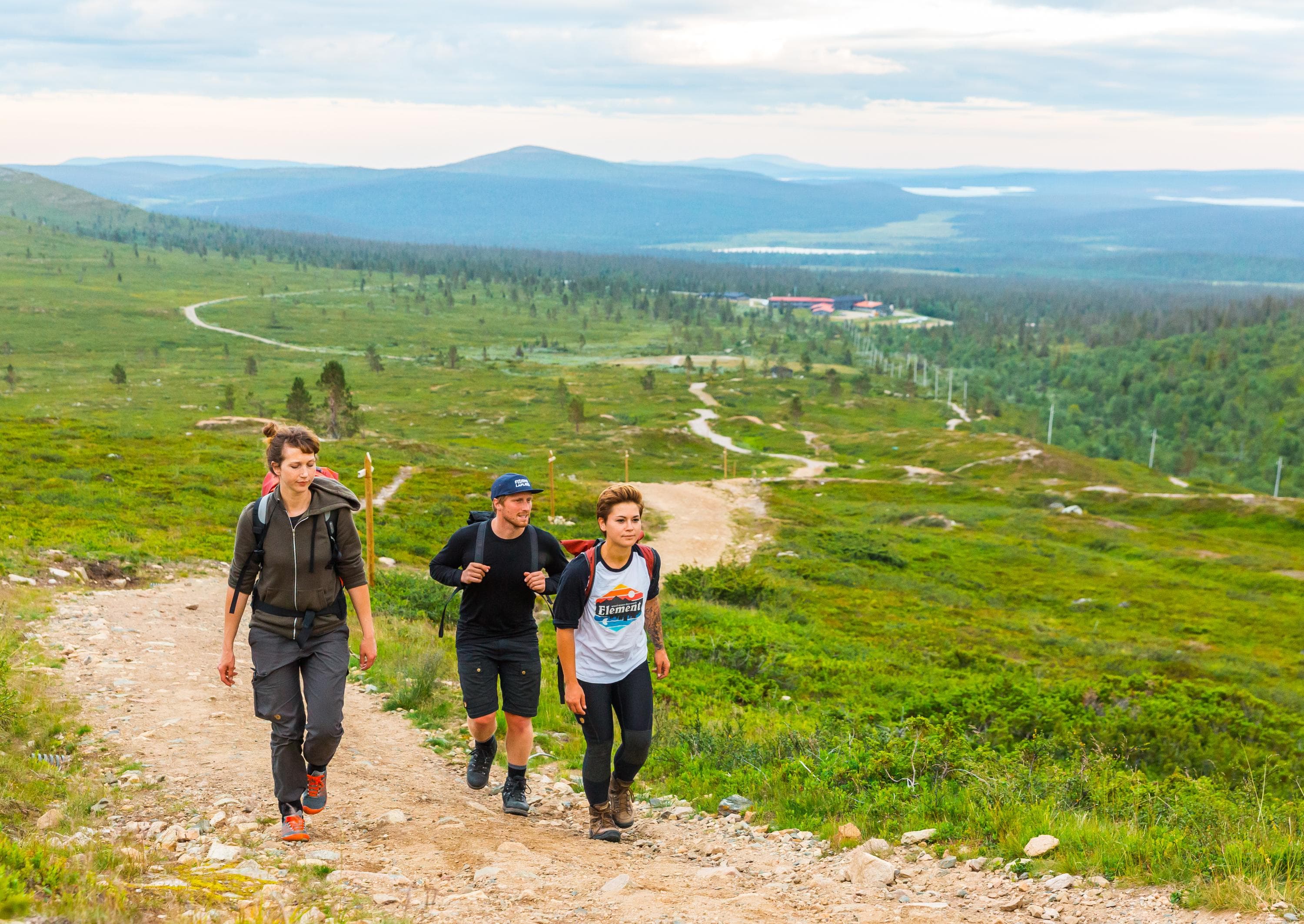Environmental art in Pallastunturi
The background to the Pallastunturi Environmental Art Project lies in the general landscape management plan for the Pallastunturi tourism area and the need to restore the area’s cultural-historical sites. The project involved artists Lena Stenberg and Mats Wikström from Sweden, Kaija Kiuru from Finland, and Deborah Schultz and Jonathan Claxton from Scotland.
The Pallastunturi environmental artwork
The idea for the Pallastunturi Environmental Art Project originated from the general landscape management plan for the Pallastunturi tourism area and the need to restore the area’s cultural-historical sites. It was decided that some of the restoration work on these sites would be carried out through environmental art, giving rise to the Pallastunturi Environmental Art Project.
One artist from Finnish Lapland, two from Norrbotten in Sweden, and two from Scotland took part in the landscaping work in Pallas. Each artist designed an environmental artwork for a site that was to be restored. The works were made mainly from natural materials such as stones, plants, and wood, and they also otherwise merge into the landscape. Come and see how art meets nature – and discover what kind of experiences it inspires in you!
Five artists, five works
At Pallas, you can explore environmental artworks by an international group of artists. The project involved artists Lena Stenberg and Mats Wikström from Sweden, Kaija Kiuru from Finland, and Deborah Schultz and Jonathan Claxton from Scotland.
Lena Stenberg built her piece on the ruins of the old Pallas Hotel, which was destroyed during the war. The work is both a memorial to the old hotel and a reminder of the destruction caused by the Lapland War.
Mats Wikström’s work, Orava Avenue, leads visitors to Pallaskota and onwards to the Palkaskero Circular Trail. The piece consists of seven bronze-cast squirrels mounted on top of wooden pillars. The squirrels, each in a different posture, represent the world’s major religions and, through them, the unity of creation. The work includes depictions of Christianity, Judaism, Islam and its liberal branch, Buddhism, Hinduism, and nature religions.
Orava Avenue was later complemented with an “experience recipe” package (julkaisut.metsa.fi, PDF, 0.6 MB), designed by National Park Guide students from Vocational College Lappia
Kaija Kiuru used her work to landscape a frost-heaved and worn ditch between the Pallas Hotel and the Visitor Centre. She used boulder stones and local vegetation as materials. The work includes a bridge crossing the ditch, marking the start of the Pallas–Hetta Hiking Trail.
Deborah Schultz incorporated both the tangible and intangible essence of Pallas into her literary work. In it, she explored the environment, the historical and cultural dimensions of tourism, and the thoughts and experiences of visitors.
Jonathan Claxton built his works Porokaarre and Taivaanranta from large natural stones. These are located at the junction of the road leading to the hotel and Mats Wikström’s Orava Avenue installation.
 Demanding accessible trail
Demanding accessible trail Demanding accessible trail
Demanding accessible trail
